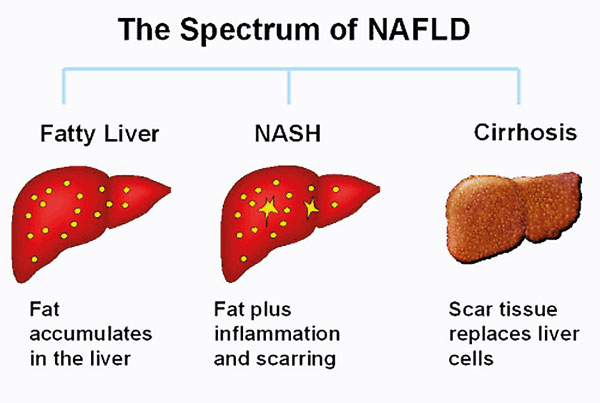When one of the most hardworking organs in the body turns fatty
View(s):By Kumudini Hettiarachchi
It is a wonder organ that we give scant attention to, as it silently performs a heavy workload within our body.
While being the largest solid organ, giving us energy is one of its specialities and even under ‘duress’ it strives to do its job.
Non-Alcoholic Fatty Liver Disease (NAFLD) is the commonest disease affecting this organ, Dr. Madunil A. Niriella, Senior Lecturer in Medicine, Faculty of Medicine, University of Kelaniya and Honorary Consultant Gastroenterologist & Hepatologist, University Medical Unit, Colombo North Teaching Hospital tells MediScene.

Dr. Madunil A. Niriella
He profiles those who are likely to suffer from NFALD as:
Those who are obese. The general obesity of such people would be a body mass index (BMI) of over 25, with the central obesity being a waist measurement of 90cm for men and 80cm for women.
Those who have diabetes
Those with abnormal lipids (cholesterol)
Those with a family history of NAFLD
Pointing out that the contributory factors for NAFLD could be genetic and environmental and as a genetic predisposition cannot be changed, he urges people to change the environmental factors. This can be achieved easily if they set their mind to it.
For, the environmental factors, as in most other non-communicable diseases, which have become the bane of modern society are:
Unhealthy lifestyles – unhealthy diet, weight gain and lack of physical exercise.
While worldwide the prevalence of NAFLD is about 30%, studies in Sri Lanka have revealed that in urban populations it is 33% and even in more physically active rural populations it is 18%.
The danger with NAFLD is that there are no specific symptoms and most people suffering from this disease are asymptomatic, says Dr. Niriella, pointing out that most of the time the diagnosis is incidental, while either performing an ultrasound scan (imaging) of the abdomen or carrying out a blood test for some other reason.
The ultrasound scan will show an enlarged and brighter-than-normal liver, with blood tests indicating elevated liver enzymes. Rarely, some patients present with discomfort in the right part of the abdomen where the liver is located, brought on by the enlargement of the liver due to fat deposits and stretching of the liver capsule, MediScene learns.
“Basically it is by chance that NAFLD is found but as soon as it is spotted, certain other conditions need to be excluded to ascertain whether it is NAFLD. These conditions include unsafe alcohol consumption, use of drugs such as steroids which can cause fatty liver and rarely chronic viral hepatitis B and C,” says Dr. Niriella.
The confirmatory tests would be the non-invasive, easy-to-do, cheap and simple ultrasound scan and a blood test to check out the liver biochemistry [the enzymes AST (aspartate aminotransferase) earlier known as SGOT (serum glutamic oxaloacetic transaminase) and ALT (alanine aminotransferase) or SGPT (serum glutamic pyruvic transaminase)].
Rarely, according to Dr. Niriella, a liver biopsy, in which a piece of liver tissue would be extracted and examined under a microscope, would be conducted.




